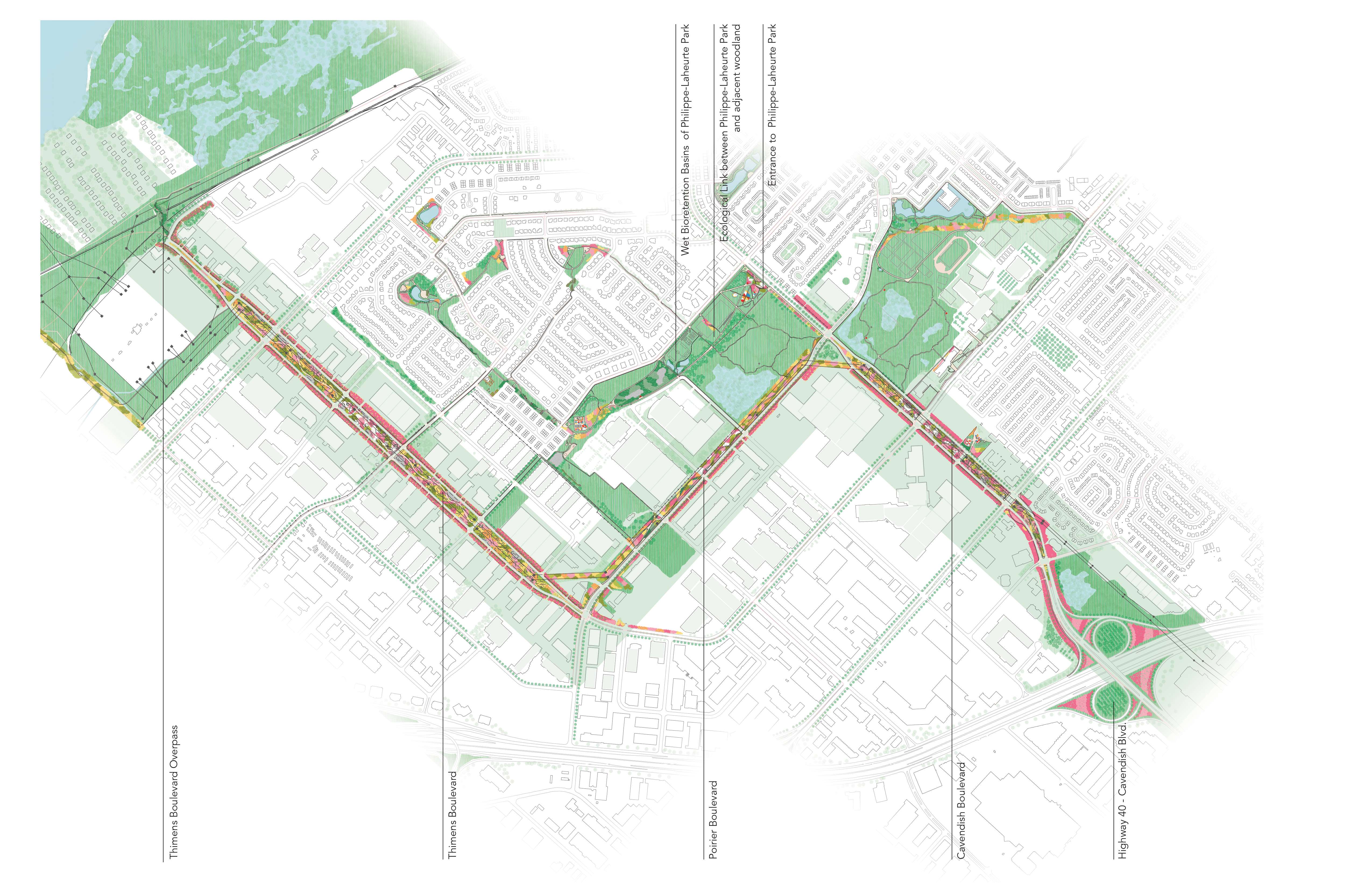
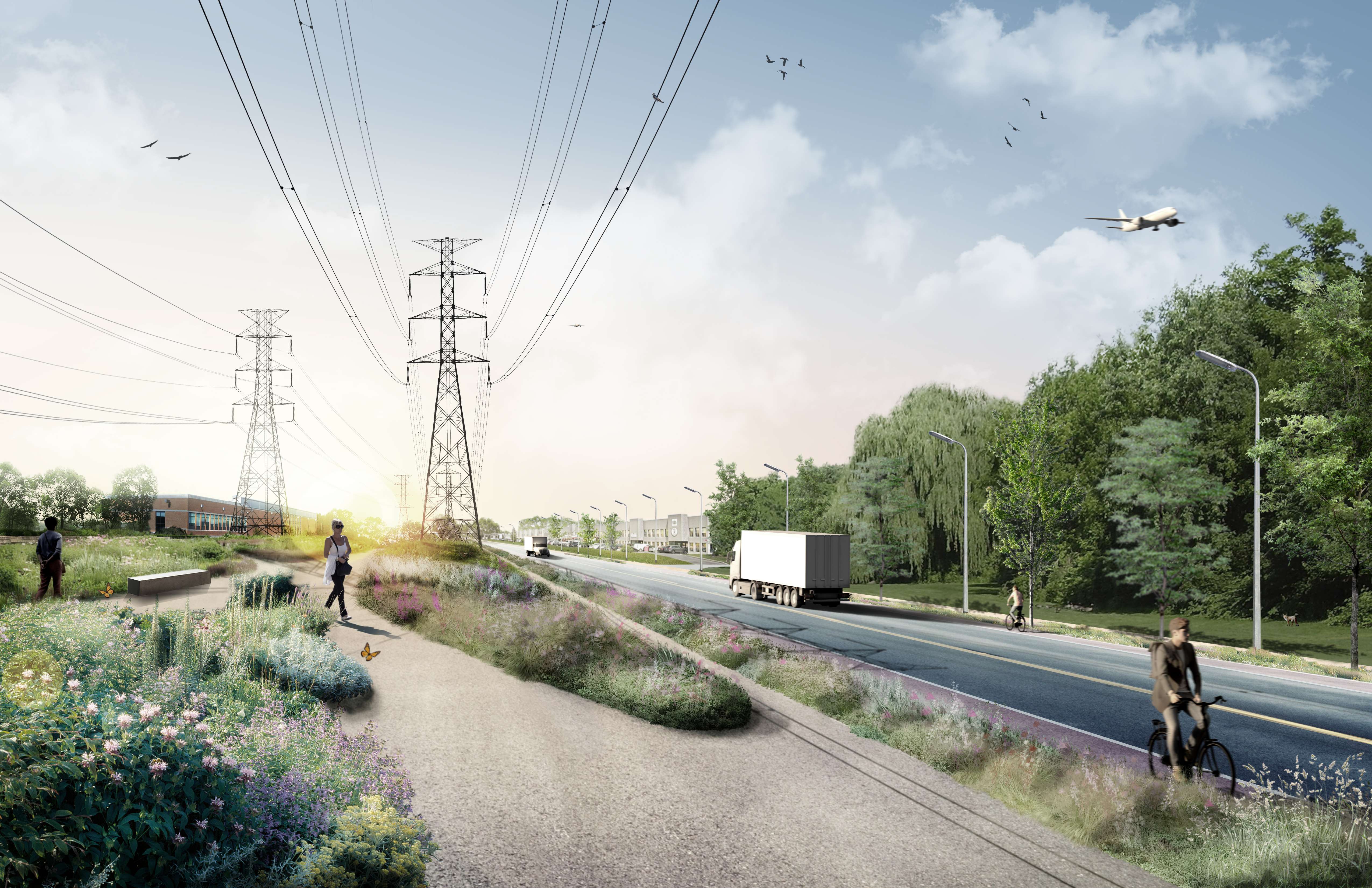
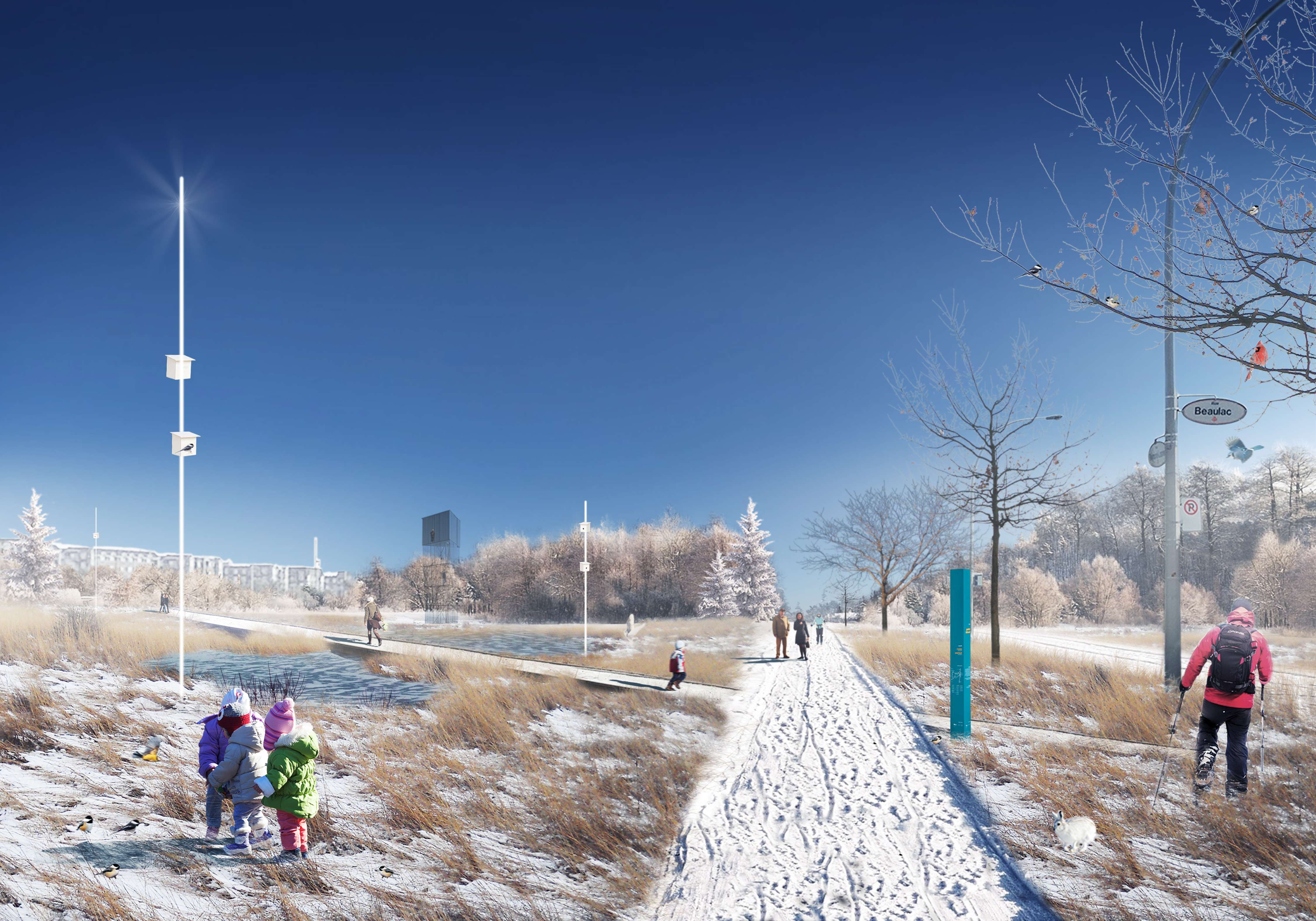
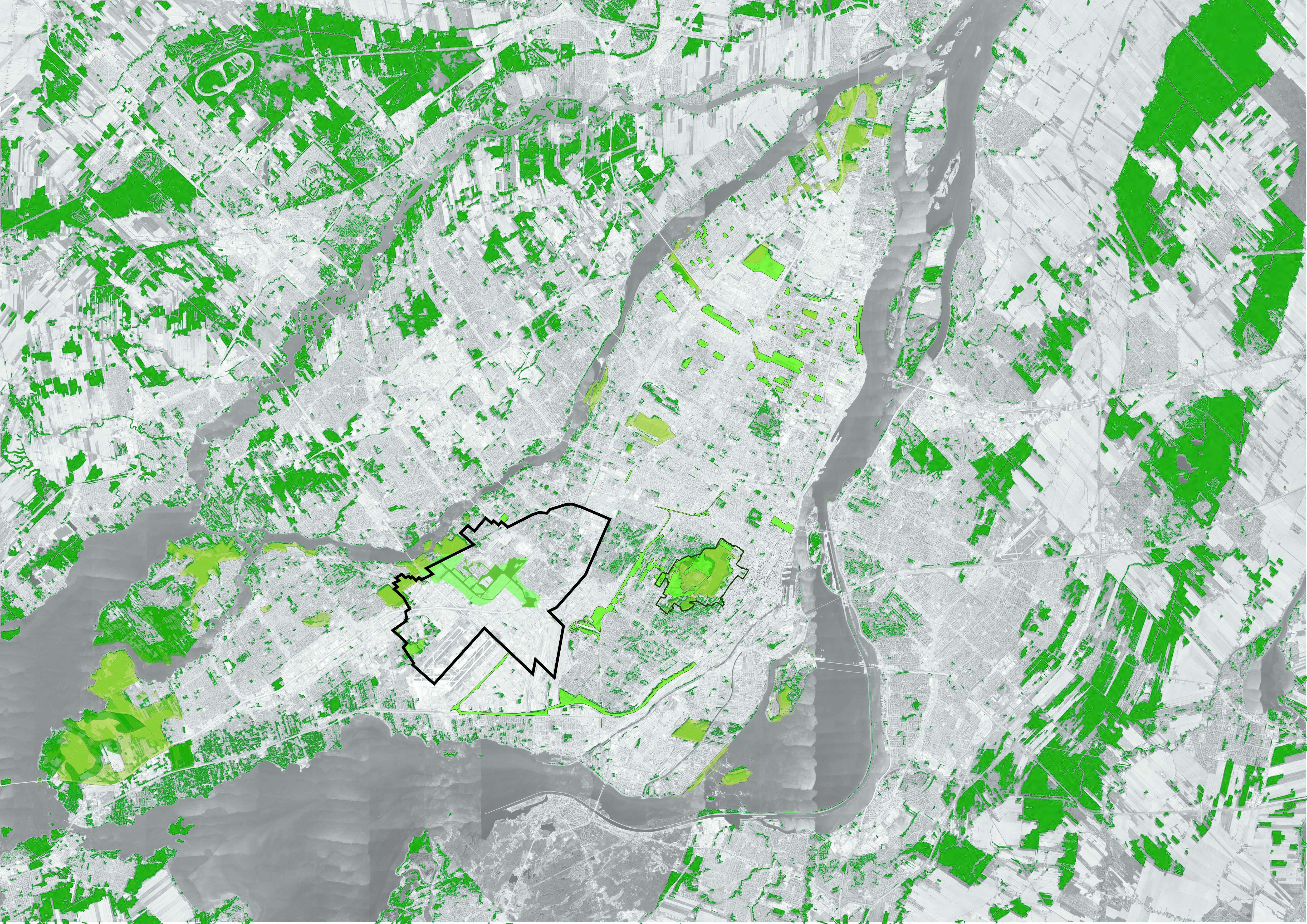
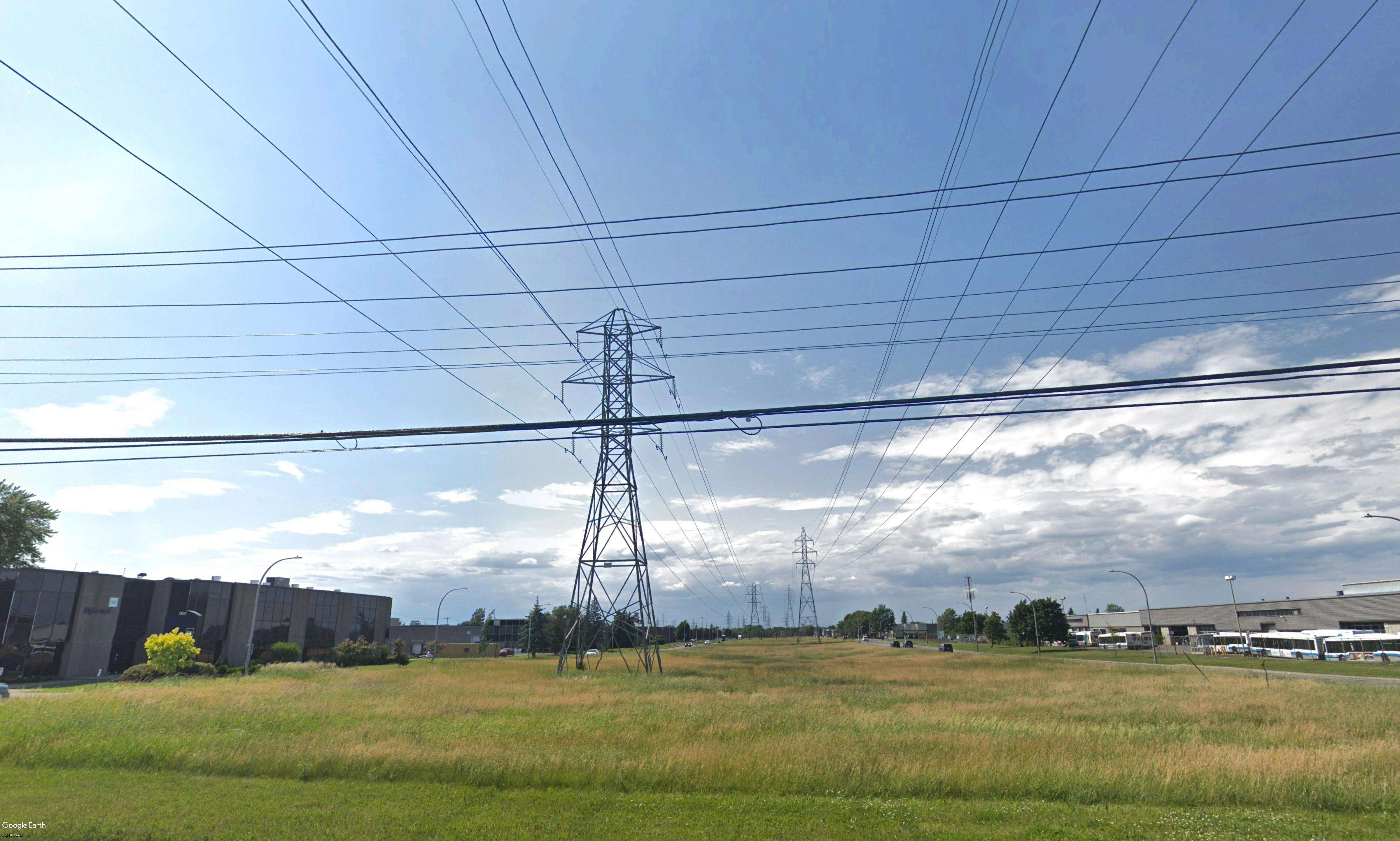
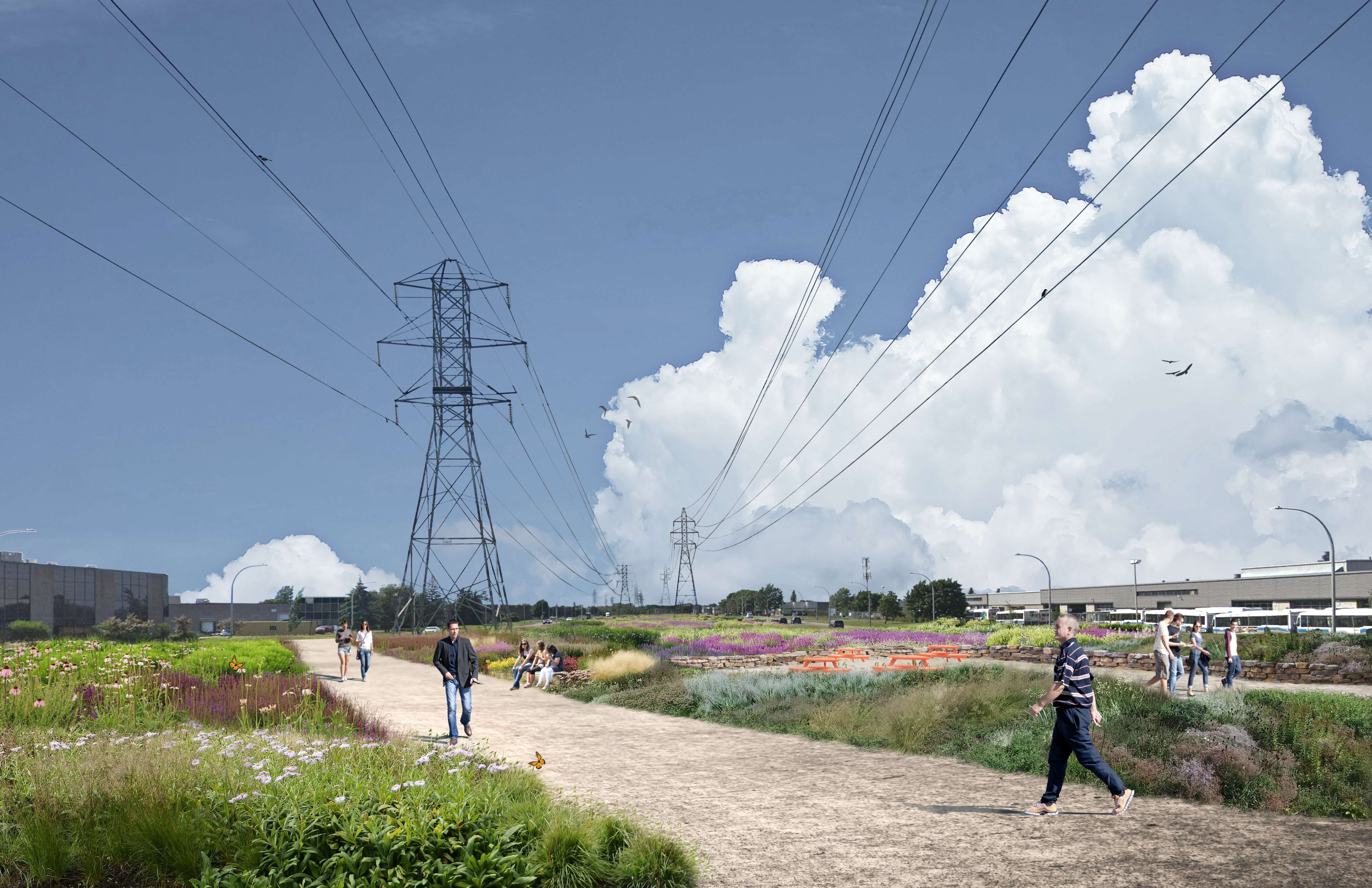
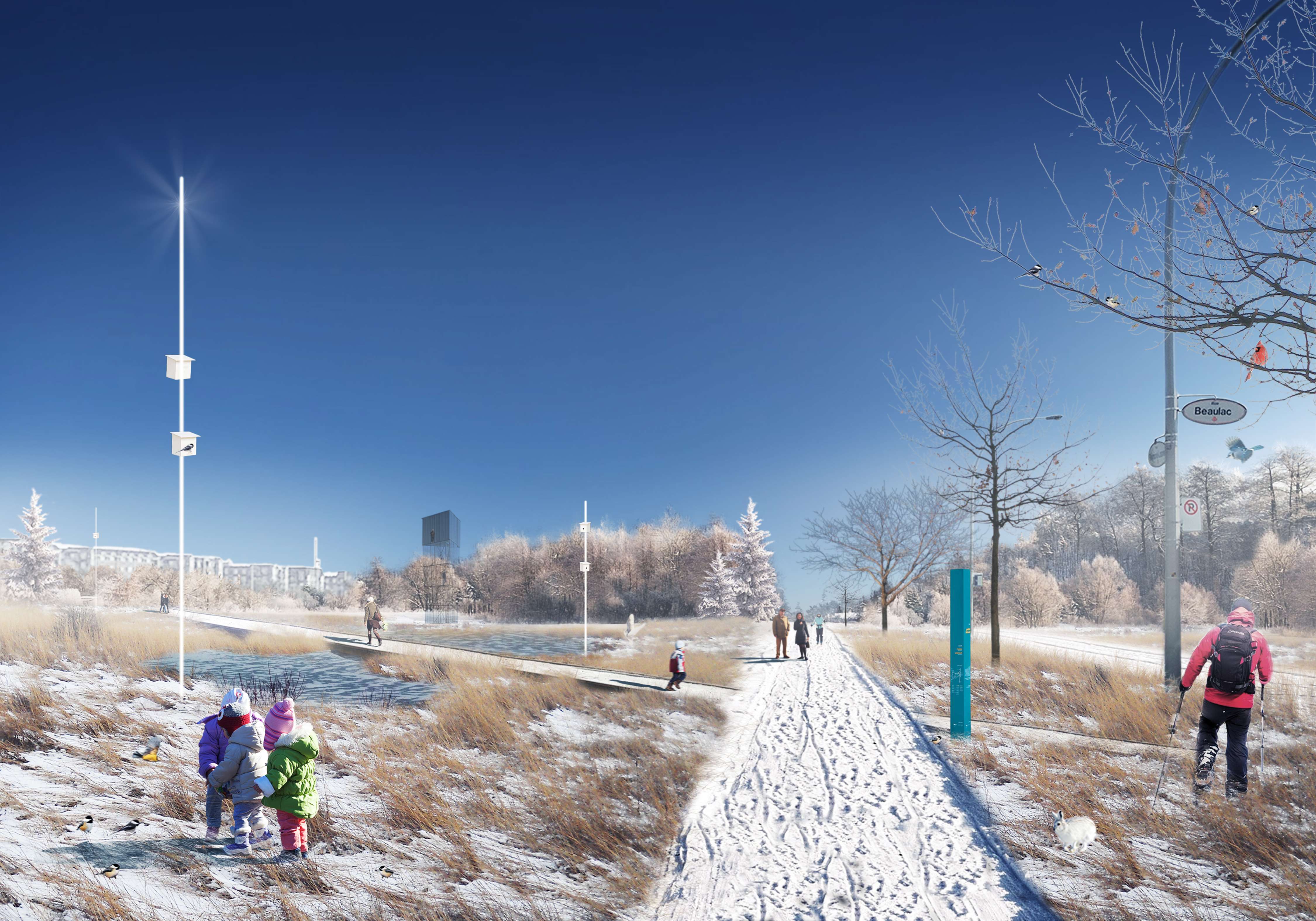

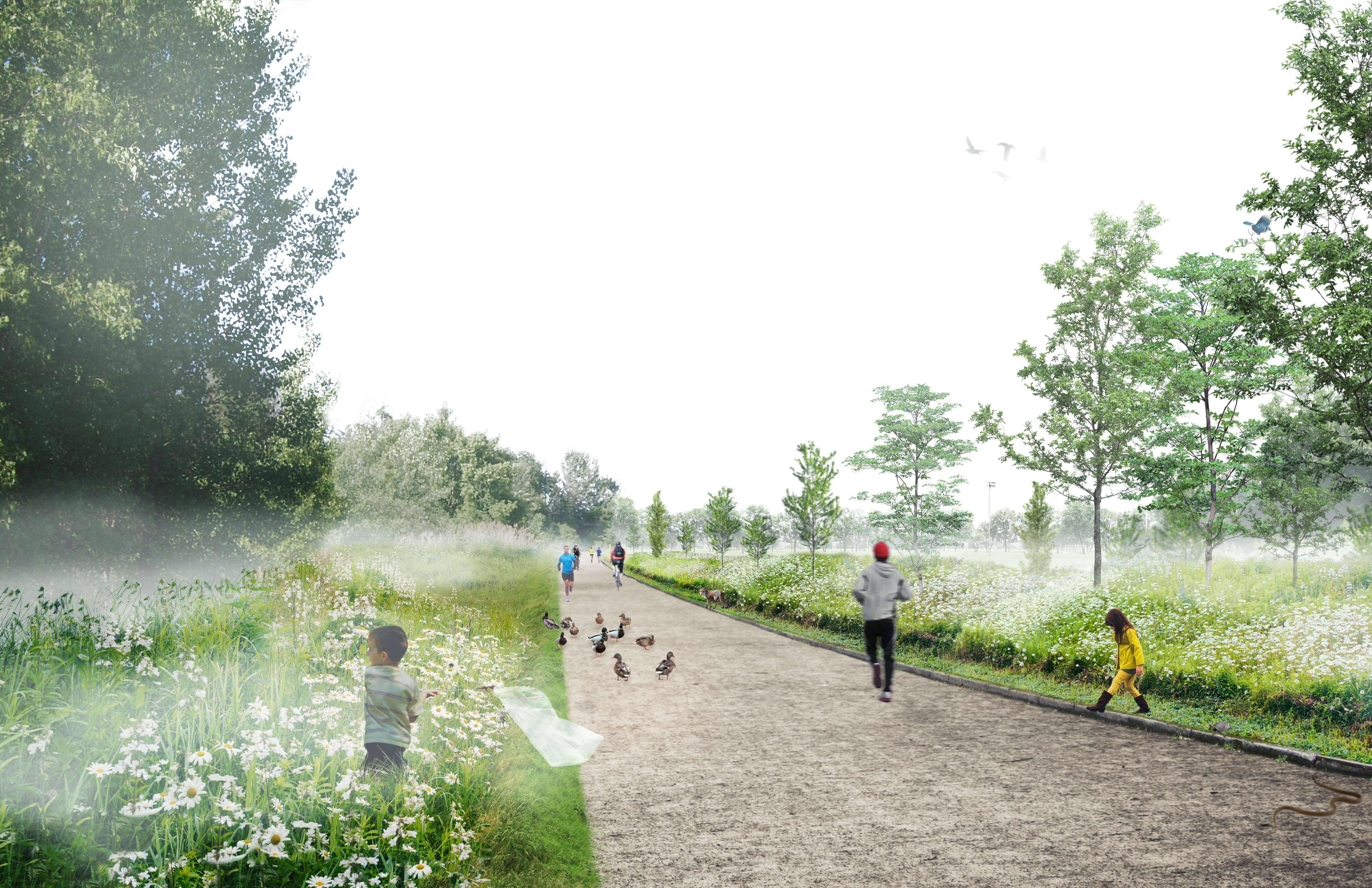
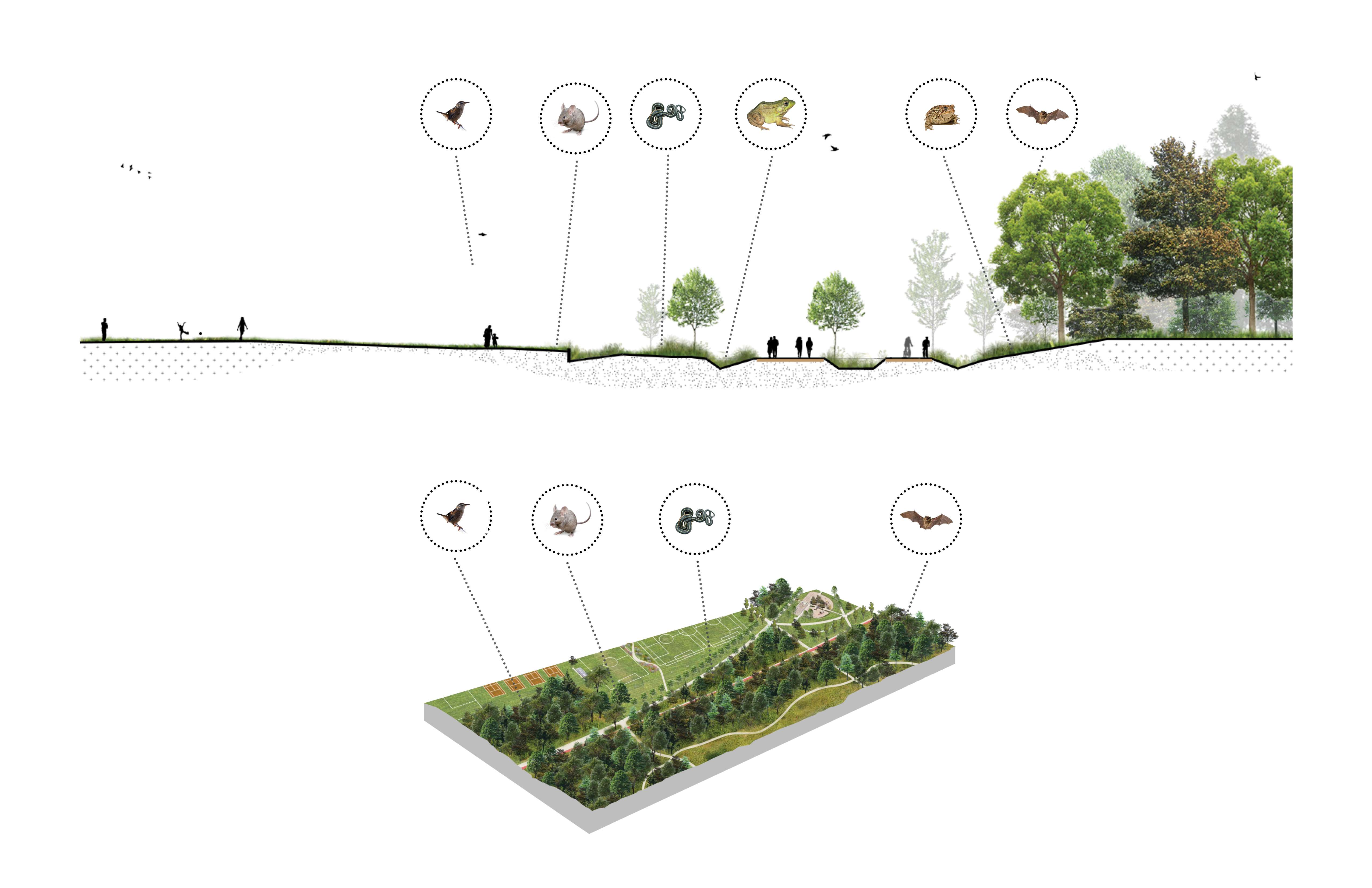

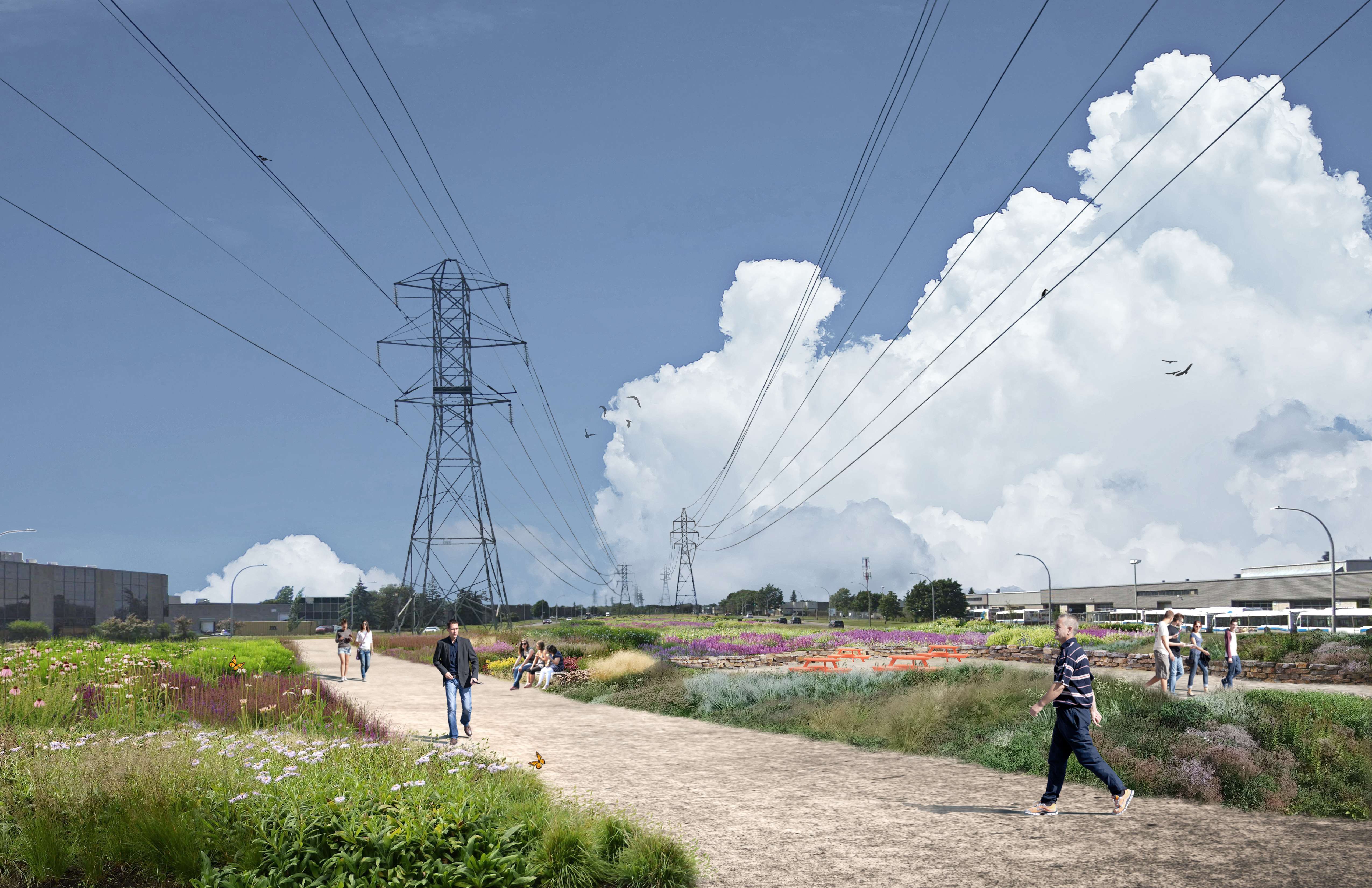
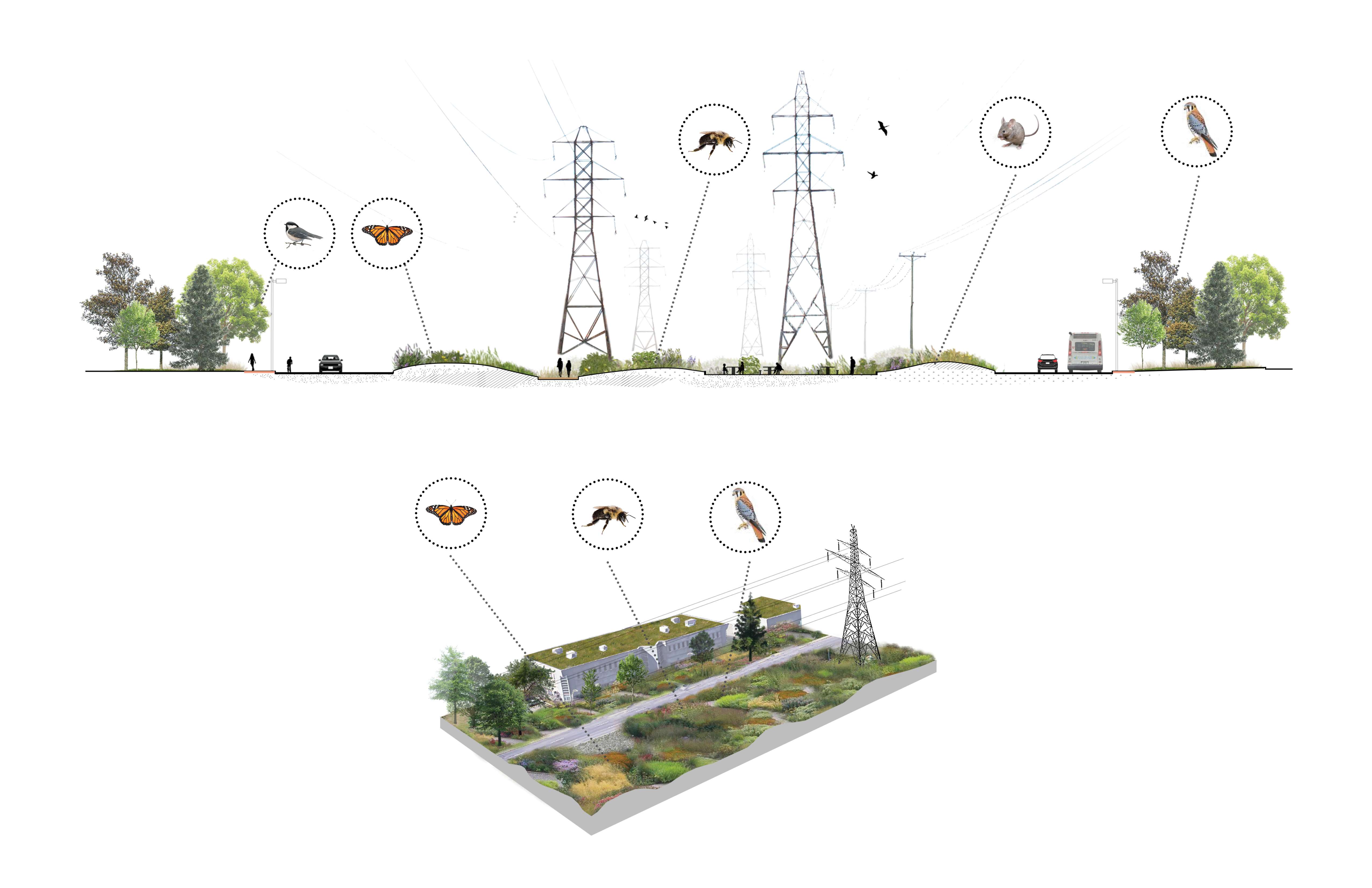
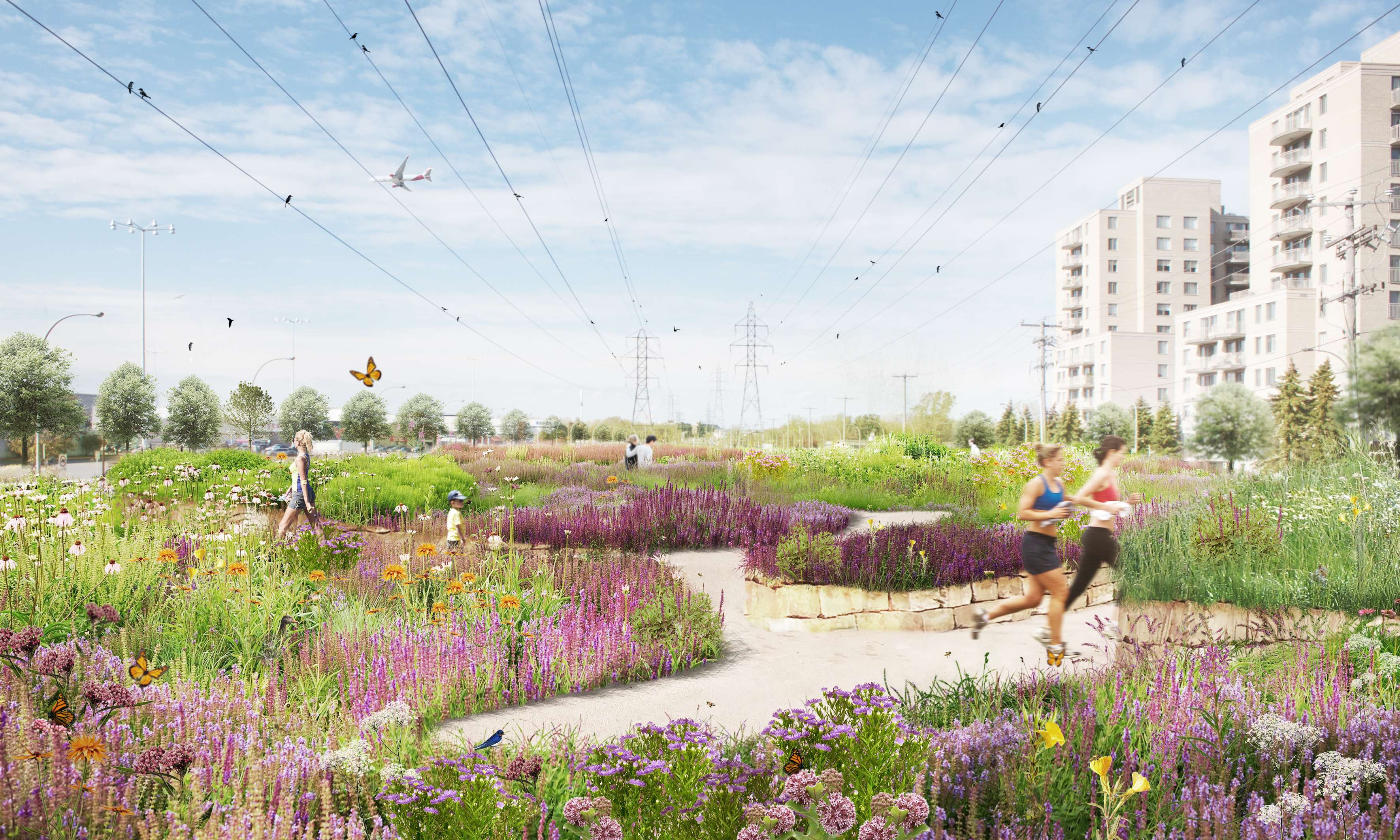
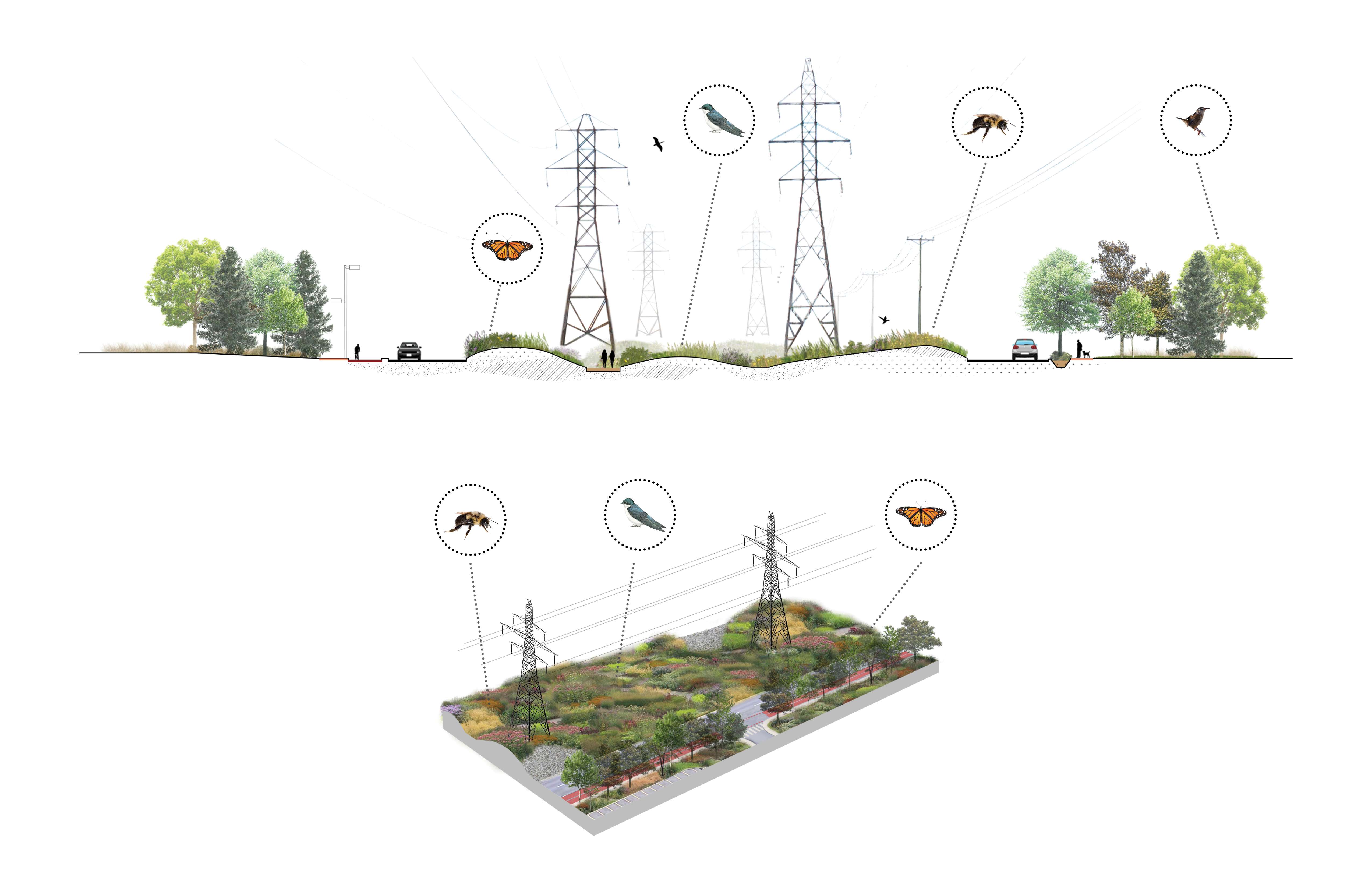
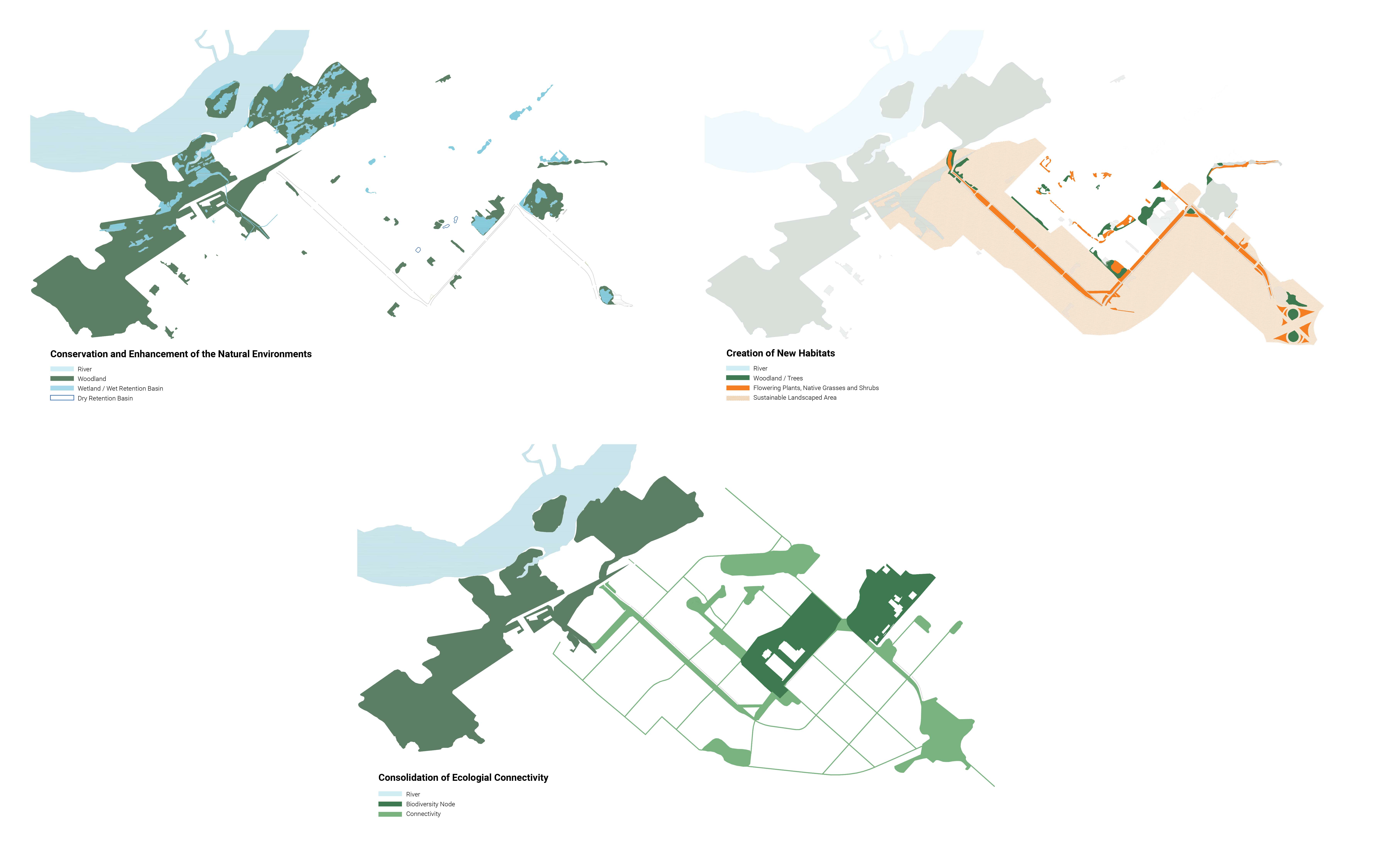
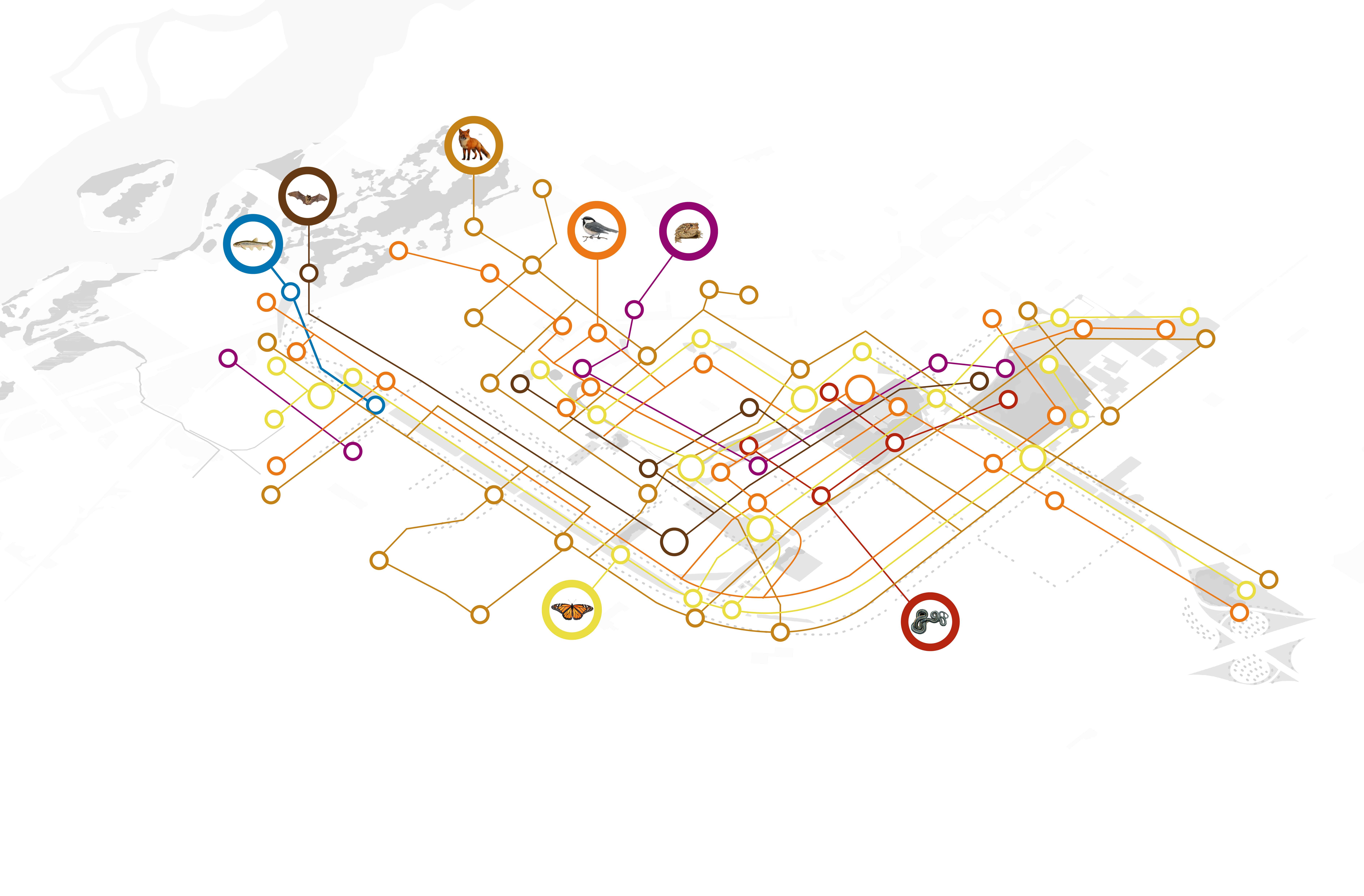
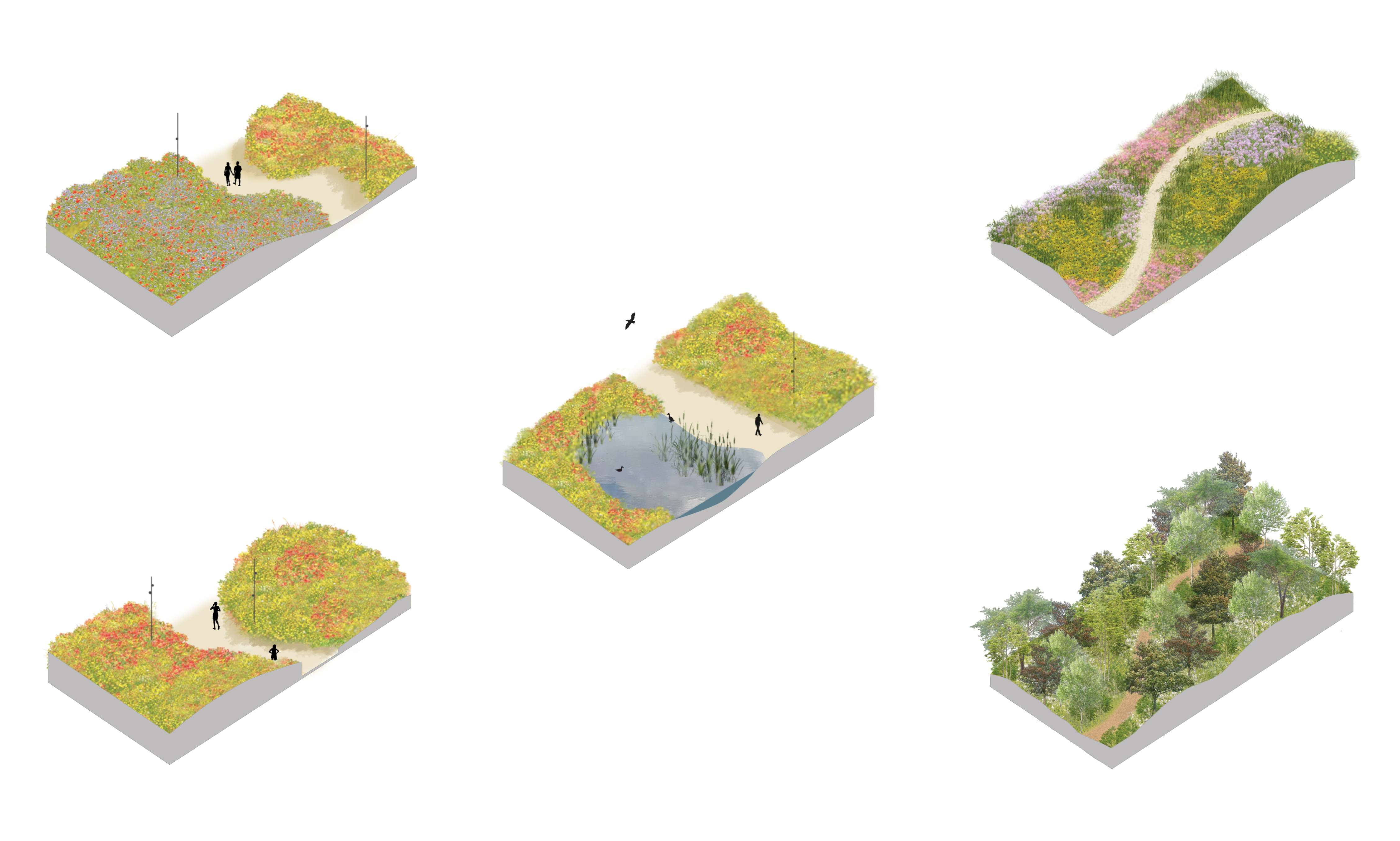
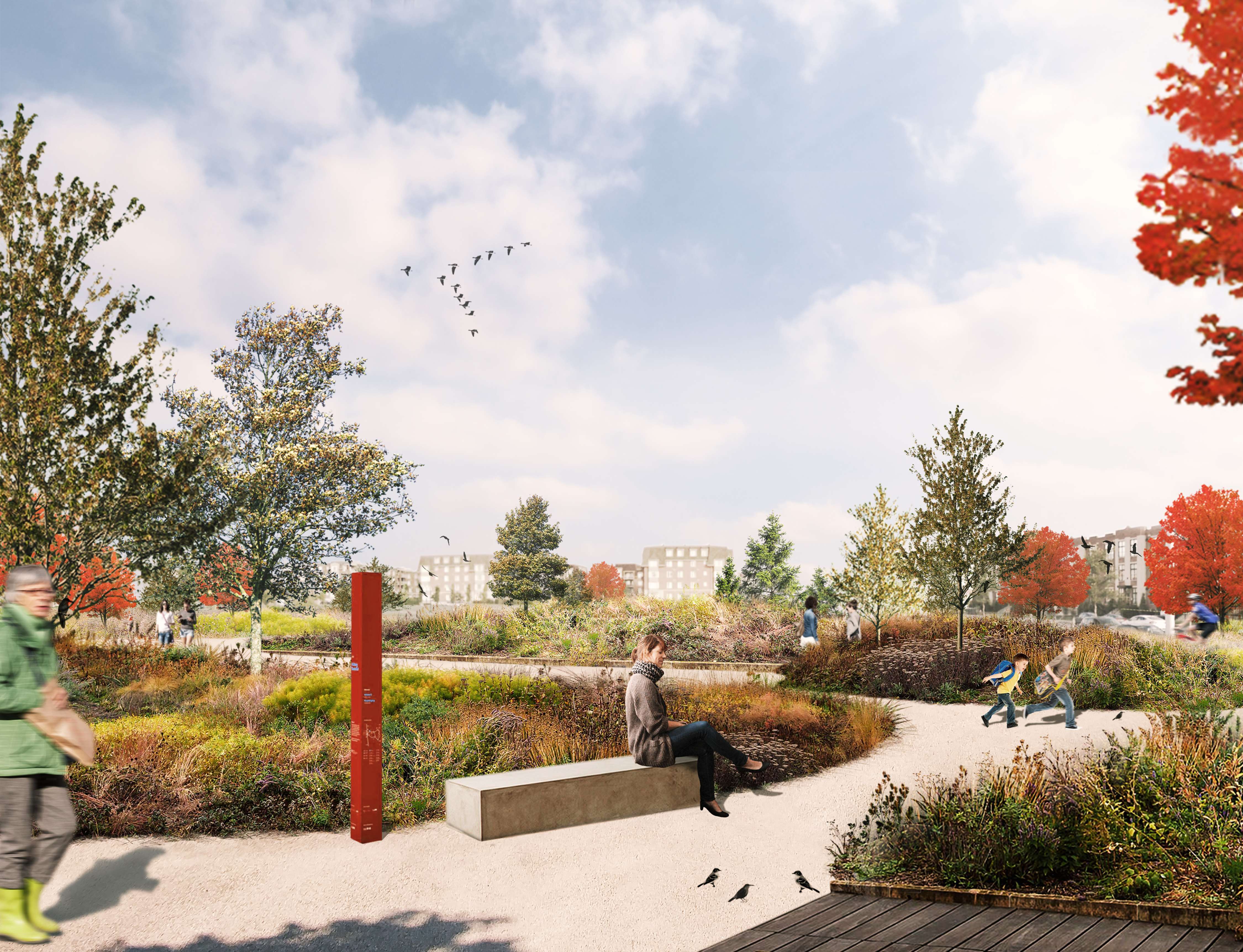
Corredor de biodiversidad_Rosa_Barba
Corredor de biodiversitat_Rosa_Barba
Biodiversity Corridor_Rosa_barba
Accelerated climate changes, which are having a growing impact on the entire planet, can partly be traced to the fast-paced car-oriented urban development of the 60s and 70s. Dictated by triumphal transportation and fossil fuel industries, decisions made at the time led to the fast disappearance of agricultural lands and tree cover from many cities around the world. Canadian cities were no exception.
In Montréal, the Borough of Saint-Laurent was particularly affected with 70% of its 42,8-square-kilometer territory devoted to industrial and commercial activities, closely connected to an international airport and a major highway network. As temperatures rose steadily over the last decades, affecting its residents, the borough started to look for environmentally friendly solutions.
In 2018, Montréal launched a national, multidisciplinary competition, in the hope of generating a master plan that would bring biodiversity back into the city grid while providing its citizens with direct access to nature. The main goal behind the competition was to create a Biodiversity Corridor through a series of interventions that would reconnect existing and future green spaces through a continuous corridor allowing animals, insects and vegetation to move freely within their regained habitat.
Our team’s winning entry proposed to use a high voltage powerline corridor as the "backbone" of the project. The hope was that the giant pylons currently dominating the landscape would soon be hovering above flowering meadows attracting birds, pollinating insects and small animals. Ground contours and a modulated topography would eventually enliven this enriched landscape, breaking away from a feeling of homogeneity. The new green network would help reconnect several isolated wooded areas as well as existing ecological reserves.
The Biodiversity Corridor, which is meant to be implemented over a period of 20 years, will serve as a laboratory for Montréal, but also for other cities around the world.
This Master Plan for the Borough of Saint-Laurent, Montréal, was the result of a multidisciplinary competition launched in 2018. The Plan and guidelines developed by our team were officially released in May 2019. The various interventions proposed by our team are meant to be implemented gradually, over the next 20 years. The very first phase was supposed to get under way earlier this year, in the spring of 2020. However current events related to the COVID pandemic have delayed the process.
The Biodiversity Corridor Master Plan received a Special Jury Award for the category “Sustainable Development” in the 2020 edition of the National Urban Design Awards. Organized jointly by the Royal Architectural Institute of Canada (RAIC), the Canadian Institute of Planners (CIP), and the Canadian Society of Landscape Architects (CSLA), the award is one of the top distinctions in Canada. As commented by the jury, "The promise of urban design is sustainable development—creating economic, environmental, social, and cultural benefits. While this project focuses on the environment, it reflects all Seven C’s’ of urban design: context, character, choice, connections, creativity, custodianship, and collaboration."
